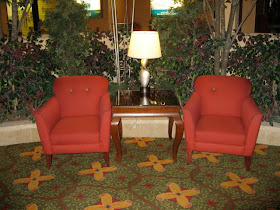 (Above) Volume 1, Issue 1 of Camera Comics, October 1944.
(Above) Volume 1, Issue 1 of Camera Comics, October 1944.Click image for larger view.
 (Above) Volume 1, No. 3 of Camera Comics, October 1944.
(Above) Volume 1, No. 3 of Camera Comics, October 1944.Click image for larger view.
 (Above) Volume 1, No. 4 of Camera Comics, December 1944, with a story about Eadweard Muybridge.
(Above) Volume 1, No. 4 of Camera Comics, December 1944, with a story about Eadweard Muybridge.Click image for larger view.
 (Above) Volume 1, No. 5 of Camera Comics, Summer 1945.
(Above) Volume 1, No. 5 of Camera Comics, Summer 1945.Click image for larger view.
 (Above) Volume 1, No. 6 of Camera Comics, Fall 1945.Click image for larger view.
(Above) Volume 1, No. 6 of Camera Comics, Fall 1945.Click image for larger view. (Above) From Volume 1, No. 1 - Opening spread of the story of Matthew B. Brady.Click image for larger view.
(Above) From Volume 1, No. 1 - Opening spread of the story of Matthew B. Brady.Click image for larger view. (Above) Volume 2, No. 7 of Camera Comics, Winter 1946.Click image for larger view.
(Above) Volume 2, No. 7 of Camera Comics, Winter 1946.Click image for larger view. (Above) Volume 2, No. 8 of Camera Comics, Spring 1946.Click image for larger view.
(Above) Volume 2, No. 8 of Camera Comics, Spring 1946.Click image for larger view. (Above) Volume 2, No. 9 of Camera Comics, Summer 1946.Click image for larger view.
(Above) Volume 2, No. 9 of Camera Comics, Summer 1946.Click image for larger view. (Above) Story series about Jim Lane, Insurance Investigator.
(Above) Story series about Jim Lane, Insurance Investigator.Click image for larger view.
 (Above) Story series about Kid Click, boy photographer.
(Above) Story series about Kid Click, boy photographer.Click image for larger view.
 (Above) Story series about Linda Lens, pro photographer.
(Above) Story series about Linda Lens, pro photographer.Click image for larger view.
 (Above) “Make a Pistol Grip for Your Camera,” a “how-to” article that is very strange.
(Above) “Make a Pistol Grip for Your Camera,” a “how-to” article that is very strange.Click image for larger view.
HERE’S A STRANGE COMIC BOOK FOR YOU. Thanks to my friend and snapshot collector Robert Jackson, who sent me these comics from his collection, I can now share them with reader’s of Accidental Mysteries.
These comic books were published between July 1944 and 1946 by the U.S. Camera Publishing Company, apparently as a way to build interest in the growing hobby of photography. With on-going cornball series like Jim Lane, Insurance Investigator and Kid Click, the publishers were making sure that they were strategically hitting all areas for the growth of photography. Yep! I want to be an insurance investigator and follow people with my camera! Also, Linda Lens was a female professional photographer—very progressive for the day.
While these comic books were obviously targeted to kids, there was always some more adult articles, like how to build a pin hole camera, or how to make wooden “pistol grip” for your camera—a way to make rapid fire pics. This pistol grip device is especially odd— a low-tech approach to a high tech (for the time) device.












